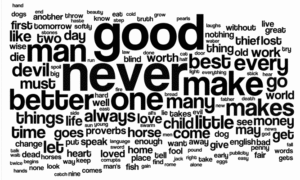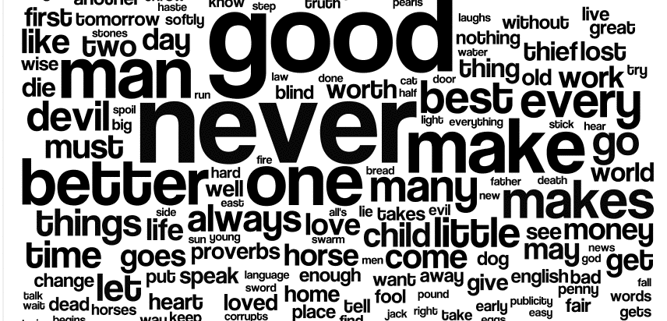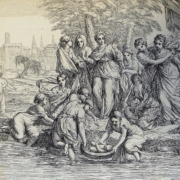The Freedom of Control / Graceful Masculinity: Bo

Part of a year-long Torah series on graceful masculinity and Jewish values.
וְהָיָה לְךָ לְאוֹת עַל-יָדְךָ, וּלְזִכָּרוֹן בֵּין עֵינֶיךָ, לְמַעַן תִּהְיֶה תּוֹרַת ה’, בְּפִיךָ: כִּי בְּיָד חֲזָקָה, הוֹצִאֲךָ ה’ מִמִּצְרָיִם.
And it will be for you a sign on your hand and for remembrance between your eyes so that G-d’s Torah may be in your mouth; for with a strong hand G-d removed you from Egypt. (Exodus 13:9)
Speech is most powerful when it is simultaneously controlled and free. We need the liberty to express ourselves, but if we do not exert care and restraint in what we say, our words cannot be optimally effective. Tefillin, טוטפות – an expression of speech,1 is the first daily mitzvah commanded in the Torah and also models both freedom and constraint. We bind ourselves to God’s words with leather straps and in doing so we exercise free choice to demonstrate a powerful religious commitment.
The purpose of tefillin is לְמַעַן תִּהְיֶה תּוֹרַת ה’ בְּפִיךָ so that our mouths will be filled with Torah. Tefillin is understood as a covenant of our mouths.2 Even though tefillin contain the words of the Written Torah, it is a symbol of the Oral Torah as well.
Tradition teaches that this commandment was delivered on the eve of Passover, right before the exodus from Egypt, in part as preparation for the redemption of speech. The Hebrew word for Egypt, מצרים, like the Talmud, starts and ends with the letter “מ” mem. The Talmud teaches3 that the “מ”4 is sometimes open and sometimes closed (a regular mem has an opening; a final mem is a closed shape) to demonstrate that some things should be said and sometimes we should instead close our mouths and not speak. The first letter in the Mishna and in the word Mitzrayim is open, while the last letter in both is closed. The letters that remain in Mitzrayim form the word “desire” יצר yetzer.
Another name for the yetzer is michshol5 (to stumble) מכשיל. 6When one wraps the straps around the ring finger one recites “I will betroth you to me forever…with faithfulness”, with the joy of a groom under the chuppah. 7 Vilna Gaon says the two shins “ש” on the tefillin form the word sus, the root of ששון / celebration. We commit in relationship to renew our identity as a chason, groom, and remind ourselves of the need for self control to prevent falling short.
The rabbis fear that emotions, even joyous ones, can become too expansive and cause us to stumble. Rabbah noticed that Abaye was exceedingly happy and said to him: “rejoice with trepidation!” (Psalms 2:11) He responded by saying “I am wearing Tefillin.”8 The Gemara then continues with the story of Mar who made a wedding feast for his son and thought the rabbis were having too good a time. He bought an expensive glass that was worth 4009 zuz and broke it in front of them to contain their joy — and this, according to Tosafot, is why we have the universal custom of breaking a glass at a wedding.10
There are several differences between the tefillin of the arm and the head. The one we wear on the head, like the intellect, is compartmentalized. There are four separate texts, each in their own space, like the four senses of sight, hearing, taste, and smell, each having their own domain. The one on the arm corresponds to the heart, and like our emotions, is total. The one on our head is revealed, the one on the arm concealed to remind us of the need to process our feelings into words that are appropriate for another to hear.
How we interact with others says a lot about who we are. Our ability to control ourselves and act properly testifies about our character, especially in emotionally charged situations.11Maturity has been defined as the intellect’s ability to control the emotions and support a healthy balance of the two.
With the Exodus of Egypt came the birth of a nation and the need to relearn how to speak properly. The word Passover in Hebrew is פסח — “Peh Sach,” the mouth that speaks. All of the mitzvos of the seder — telling the story, eating matzah, drinking wine — involve the mouth. Paroh is understood as פה רע / “Peh Rah” — the evil mouth. The more we fill ourselves with Torah the more empowered we are. For there is no freedom when we are not in control; including controlling the words that come out of our mouth.
Discussion questions:
We do not wear tefillin on Shabbos. What might that tell us about the way we speak today?
What else in Judaism is called a “sign?” What do they have in common?
What are some strategies to better use words as a way of improving a situation?
Why do we often feel better after we have spoken about our feelings?
1. Rashi Exodus 13:16↩
2. עיין שפת אמת פ’ נח תרנ”ד↩
3. Shabbos 104a↩
4. Spelled מם with both letters, the first “open” and last “closed”.↩
5. עיין בן יהוידע ברכות ה: רע עין = 400 on the story of 400 barrels of wine that turned to vinegar↩
6. Michsol also has a numerical value of 400, the same as ת in חתן, leaving חן remaining.↩
7. Malbim hosea 2:21 כמ”ש ומשוש חתן על כלה ישיש עליך אלהיך, ויהיו אירוסין חדשים↩
8. Brachos 30b↩
9. Also an allusion to Esev who came after Jacob with 400 men.↩
10. The Tzlach explains that we are similar to glass in that we are also made from the earth and that we fall and break (through sin) we can also be reformed, like glass, through repentance.↩
11. In the verse of Shema, the first and last letters are large and form the word עד, meaning testimony. The Gra observes that the remaining letters in those two words form אשמך – to rejoice.↩

By Rabbi Mike Moskowitz. See other #MenschUp posts here.









